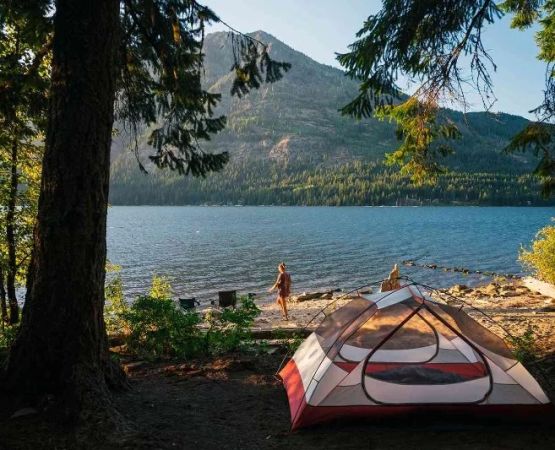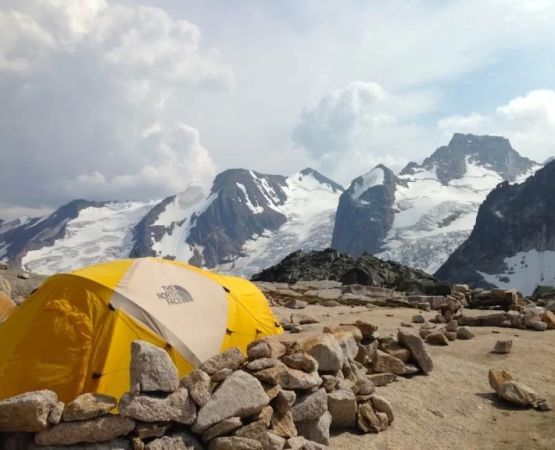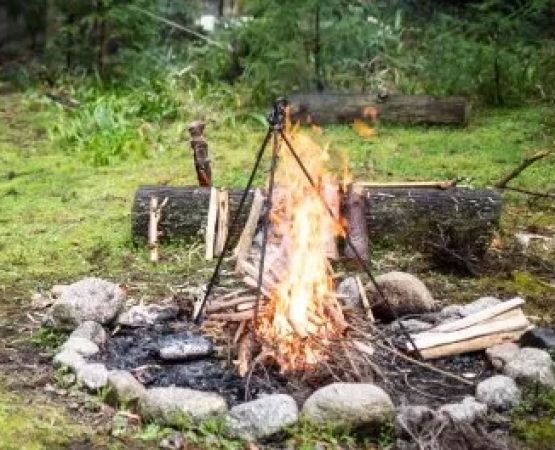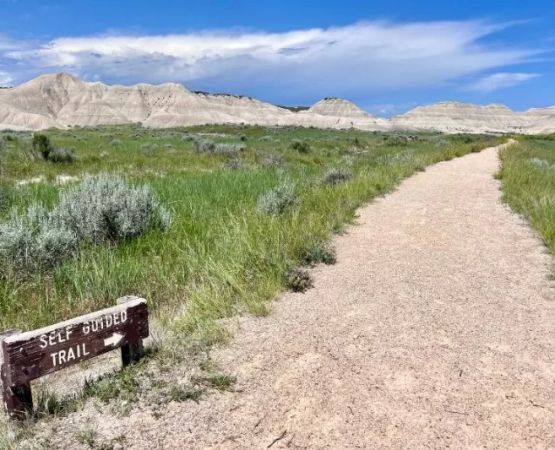- Choosing-the-Right-Meadow-Campsite
- Understanding-Meadow-Ecosystems
- Weather-Challenges-in-Rocky-Mountain-Meadows
- How-to-Set-Up-Camp-Safely
- Wildlife-Safety-in-Mountain-Meadows
- Essential-Gear-for-Meadow-Camping
- Real-Experiences-from-Campers
- Planning-Your-Trip-Wisely
Choosing the Right Meadow Campsite
Camping in Rocky Mountain meadows offers breathtaking 360-degree views, soft ground cover, and a feeling of openness that forested campsites rarely provide. But selecting the right meadow takes thoughtful planning. Before setting up your tent, take time to observe the terrain. Meadows at higher elevations may look inviting, but their exposure to wind and unpredictable weather makes it essential to choose a location that balances beauty with practicality.
Meadows near tree lines often provide the best compromise. You can enjoy panoramic scenery while benefitting from partial wind protection. When choosing a site, avoid areas where water tends to pool after rain, as meadows can become spongy and unstable. Instead, pick slightly elevated ground with firm soil. Many experienced hikers report choosing spots with natural windbreaks—whether boulders, shrubs, or slight dips in the land—to enhance safety and comfort.
Understanding Meadow Ecosystems
Why Meadows Are Delicate and How to Protect Them
Rocky Mountain meadows are thriving ecosystems filled with grasses, wildflowers, insects, and nesting animals. These landscapes may look rugged, but they recover slowly from damage. One misplaced tent or campfire can leave a mark for years. Understanding how meadows function helps you protect them.
Meadows often sit on shallow soil layers underlain by delicate root systems. These roots stabilize plant life, retain water, and prevent erosion. When campers set up tents repeatedly in the same areas, these roots suffer. That’s why many national parks encourage rotating campsites and avoiding fragile meadow pockets.
At Pine Cliff Resort, outdoor experts often highlight the importance of choosing durable surfaces whenever possible. By doing so, you help ensure future visitors can enjoy the same untouched beauty.
Weather Challenges in Rocky Mountain Meadows
How to Prepare for Unpredictable Conditions
Meadow camping means vulnerability to shifting weather. One moment you may enjoy sunny skies, and the next, mountain storms can roll in with startling speed. Wind exposure is particularly intense in open meadows, sometimes strong enough to bend tent poles or rip away improperly anchored shelters.
1. Use heavy-duty stakes designed for soft, grassy terrain.
2. Orient your tent so its lowest profile faces the wind.
3. Bring extra guylines to reinforce stability.
4. Keep rain coverings secured even if the sky looks clear.
Frequent changes in temperature are another factor. Nights can become cold quickly due to lack of tree cover. Many seasoned campers bring insulated sleeping pads to stay warm without relying solely on sleeping bags.
How to Set Up Camp Safely
Building a Stable Foundation
To camp effectively in Rocky Mountain meadows, start with proper setup techniques that ensure your safety. Clear the area of sharp rocks or debris without disturbing the plants’ root systems. Press the grass gently rather than scraping it. Use footprint tarps to protect your tent from moisture rising from the meadow floor.
Place cooking areas downwind from your tent, and always use portable stoves rather than open fires, which can quickly spread across dry grass. Many meadow regions enforce strict fire bans for this reason.
Wildlife Safety in Mountain Meadows
Living Alongside Wildlife Responsibly
Mountain meadows are natural highways for wildlife such as elk, moose, marmots, foxes, and even bears. Your campsite might be on one of their daily paths. Understanding how to coexist respectfully reduces risks for both humans and animals.
Store all food securely and well away from sleeping areas. Even in meadows, the scent of food can travel long distances. While bear encounters in meadows are less common than in forested valleys, the possibility still exists. Follow local guidelines, use bear-resistant containers, and never leave waste behind.
Hikers at Pine Cliff Resort often share stories of early morning encounters with elk grazing near their tents. While thrilling, these moments remind campers of the importance of maintaining distance and not interfering with wildlife behavior.
Essential Gear for Meadow Camping
What You Should Bring
Meadow environments are both beautiful and demanding, calling for specific gear that supports open-terrain camping. Key items include:
1. Extra-long stakes for soft ground.
2. High-quality windproof tents.
3. Insulated sleeping pads.
4. Weather-resistant clothing layers.
5. Binoculars for spotting wildlife from afar.
6. Lightweight tarps for shade or rain protection.
Many outdoor enthusiasts recommend testing your gear before arriving in the mountains to ensure everything functions properly.
Real Experiences from Campers
Stories from Rocky Mountain Adventures
One traveler recounted setting up camp in a meadow near Estes Park. At sunset, the sky turned orange, and a herd of mule deer wandered just beyond the tent. Later that night, strong winds rattled the campsite, challenging their tent setup. The experience became a cherished memory—proof that meadow camping combines peaceful beauty with thrilling unpredictability.
Another camper shared how a sudden thunderstorm transformed the meadow into a shimmering landscape of droplets. Their preparation—extra stakes, reinforced guylines, and waterproof gear—made the moment exhilarating instead of stressful.
Planning Your Trip Wisely
Ensuring a Safe and Memorable Experience
Careful planning makes all the difference when camping in Rocky Mountain meadows. Research the terrain, pack the right equipment, and check weather forecasts frequently. Arrive early to choose a safe location, and spend time walking the perimeter to ensure you’re not camped on sensitive habitats or animal trails.
For travelers seeking expert guidance, Pine Cliff Resort offers helpful resources and recommendations for nearby meadow-friendly camping zones. Whether you're a seasoned backpacker or a newcomer eager to explore mountain landscapes, planning well ensures your trip is both safe and unforgettable.
Camping in Rocky Mountain meadows is a unique adventure—one that rewards preparation, respect for nature, and an openness to the powerful beauty of high-altitude environments.







